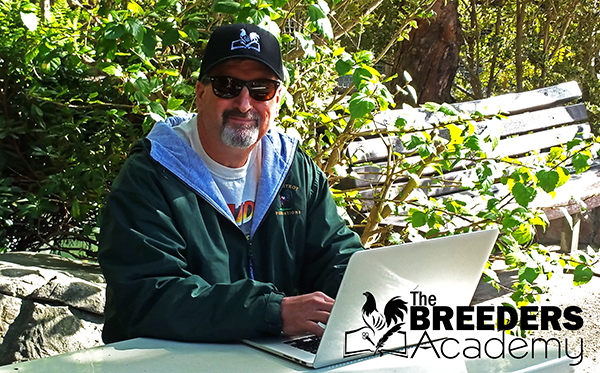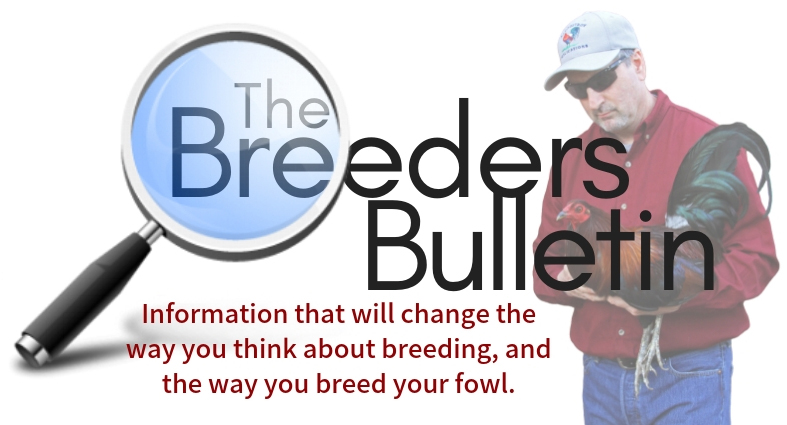 Another fact many breeders of domestic chickens (which includes ornamental, general purpose breeds, as well as the commercial breeds and strains) don’t know is that all chickens that exist today owe their very existence to the Gamecock. All chickens today have a percentage, be it very small in most cases, of gamefowl blood running through their veins.
Another fact many breeders of domestic chickens (which includes ornamental, general purpose breeds, as well as the commercial breeds and strains) don’t know is that all chickens that exist today owe their very existence to the Gamecock. All chickens today have a percentage, be it very small in most cases, of gamefowl blood running through their veins.
As you well know, all chickens originated from the Wild Red Junglefowl of South East Asia, and gamefowl originated directly from the Junglefowl. Although there are some fowl that also originated directly from Junglefowl, most breeds share their origins with that of gamefowl.
In the early stages of man, Junglefowl were hunted, similar to other wild animals, for the occasional meat and eggs, but their true popularity with humans was derived from the fact that the cocks were willing to fight. It is for this reason that the sport of cockfighting is known as “The world’s first spectators sport.” As man became more sophisticated, the Junglefowl would be kept and raised in captivity, and perpetually bred. Through the early processes of selective breeding, breeders were able to enhance the bird’s willingness to fight, and eventually the birds would fight to the death. This is known as “gameness.”
As humans became more civilized and would begin to claim property as their own, they would soon keep and raise livestock of all kinds. Small farms would become the norm. Eventually, both the Junglefowl, and its closest cousin, the gamecock, would be recognized as a good source of food (eggs and meat). Easy to raise and cheap to keep around the farm, chickens would become a major source of food.
As the needs of the farmer changed, such as the necessities for more meat and eggs, the chicken would change as well. Chickens, such as, Dorkings, Plymouth Rocks, Rhode Island Reds, and a number of other similar type breeds would rise to meet those needs.
Sometime in the 1800’s, during the industrial revolution, farmers began to realize the importance of the chicken as a commodity. The mass production of both eggs and meat would bring upon the birth of the commercial chicken farmer. This industrial rise of the chicken would be powerful enough to change the world. Again, as the needs of the commercial poultry business would change, such as the need for larger, faster growing meat birds, and chickens that can lay more eggs per year, so would the chickens change to meet the needs of the farmers.
As in the natural order of things, the commercial poultry business would become responsible for many of the breeds that we have today. As the breeds advanced so has the poultry industry. Fowl that were considered to be high production for the time are now being considered simply as general purpose breeds. Although we have seen many breeds that would play a role in the commercial poultry industry, its breeds such as Leghorns, and the discovery of the Cornish-Rock-Cross, that would change the poultry industry in a huge way.
In the 1800’s, poultry shows would become popular among farmers and city folk alike. Anyone who was interested in raising chickens could get involved. Poultry shows would play a big role in the development of all chickens. For many, it made raising chickens fun again, for others it would cause the reemergence of the backyard breeder, in a time when they were most needed. Many fowl were beginning to disappear, and it was the backyard breeders who would save many of those endangered breeds.
Through the years, poultry shows have become responsible for many of the ornamental breeds, as well as many of the newer varieties within the breeds of fowl we have today, this includes many of our gamefowl strains. For instance, the old English and American Games both have as many as 30 different varieties within the breed, which were created partly due to interest in poultry shows, and an interest in creating new varieties.
Summary: As the desire to improve the breed (American Games), and create new varieties and strains, progresses, they will continue to play a large role in the future of all fowl. However, we must recognize the fact that if it wasn’t for the Wild Junglefowl, and their eventual transformation into gamefowl, the chickens that we have today would most likely be nonexistent. Gamefowl have played an important role in the progression and development of the modern chicken. And rest assured that they will be called upon to play a larger role in the future survival of all chickens?


